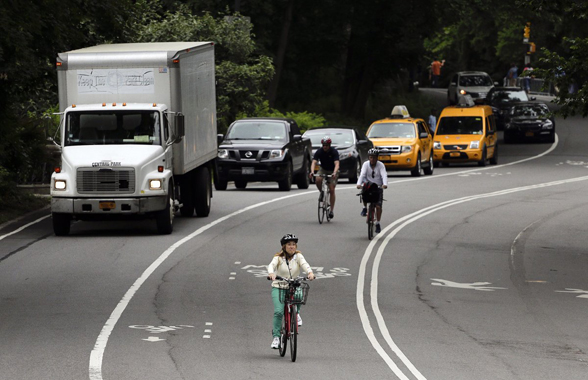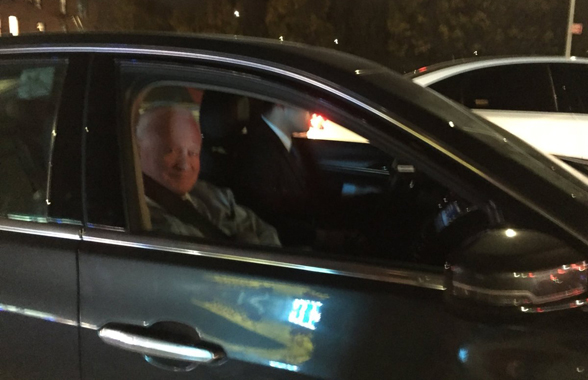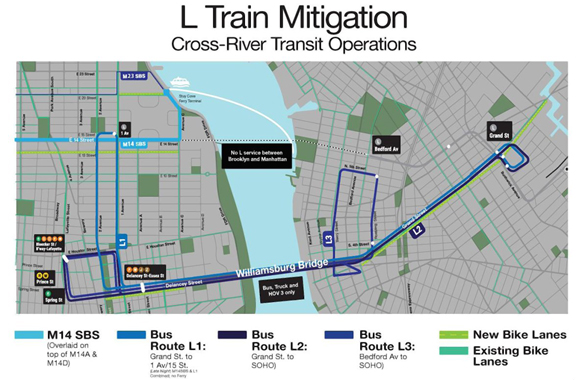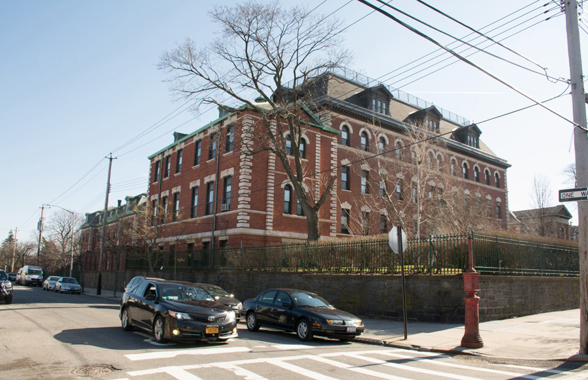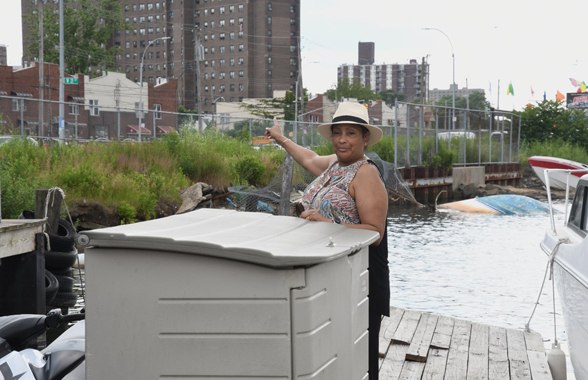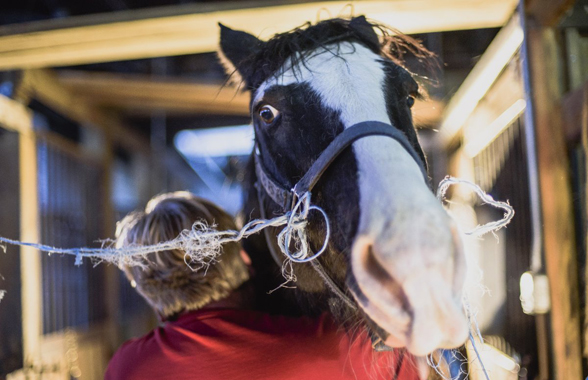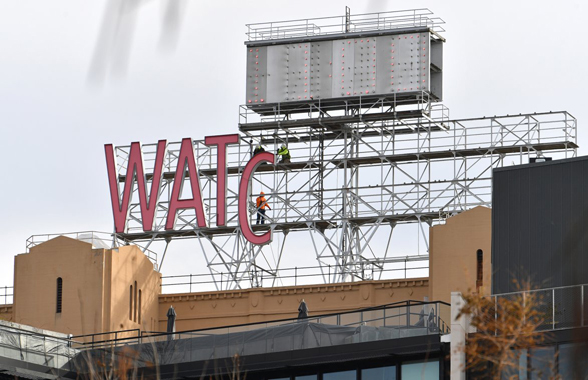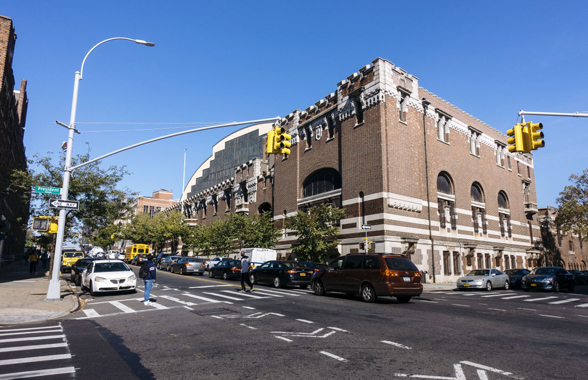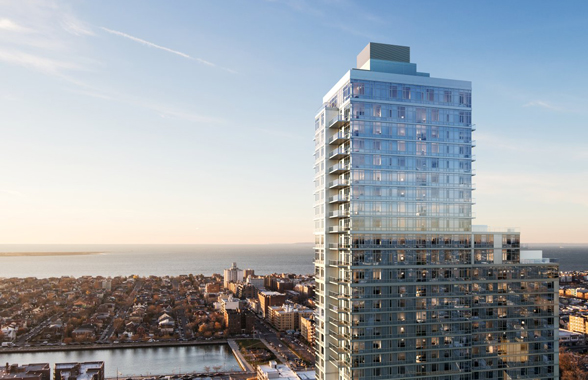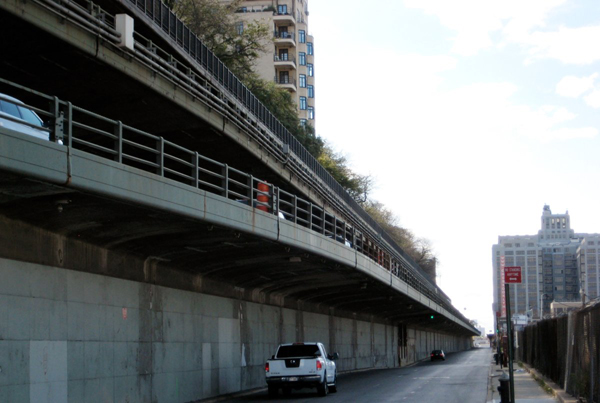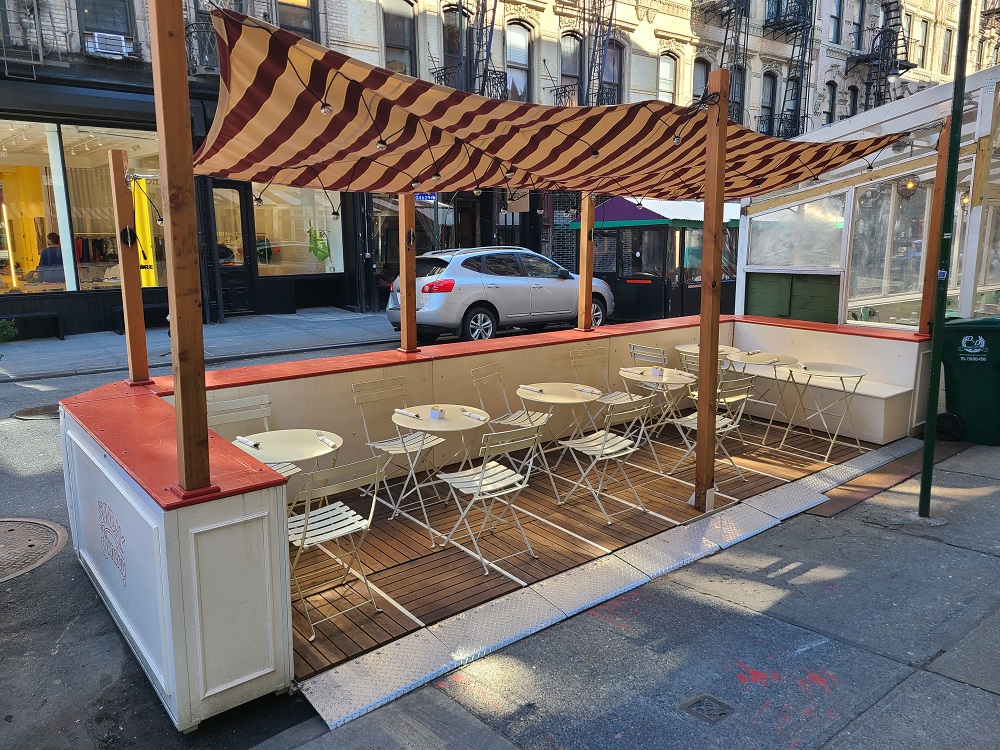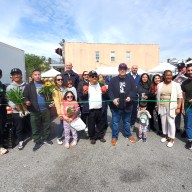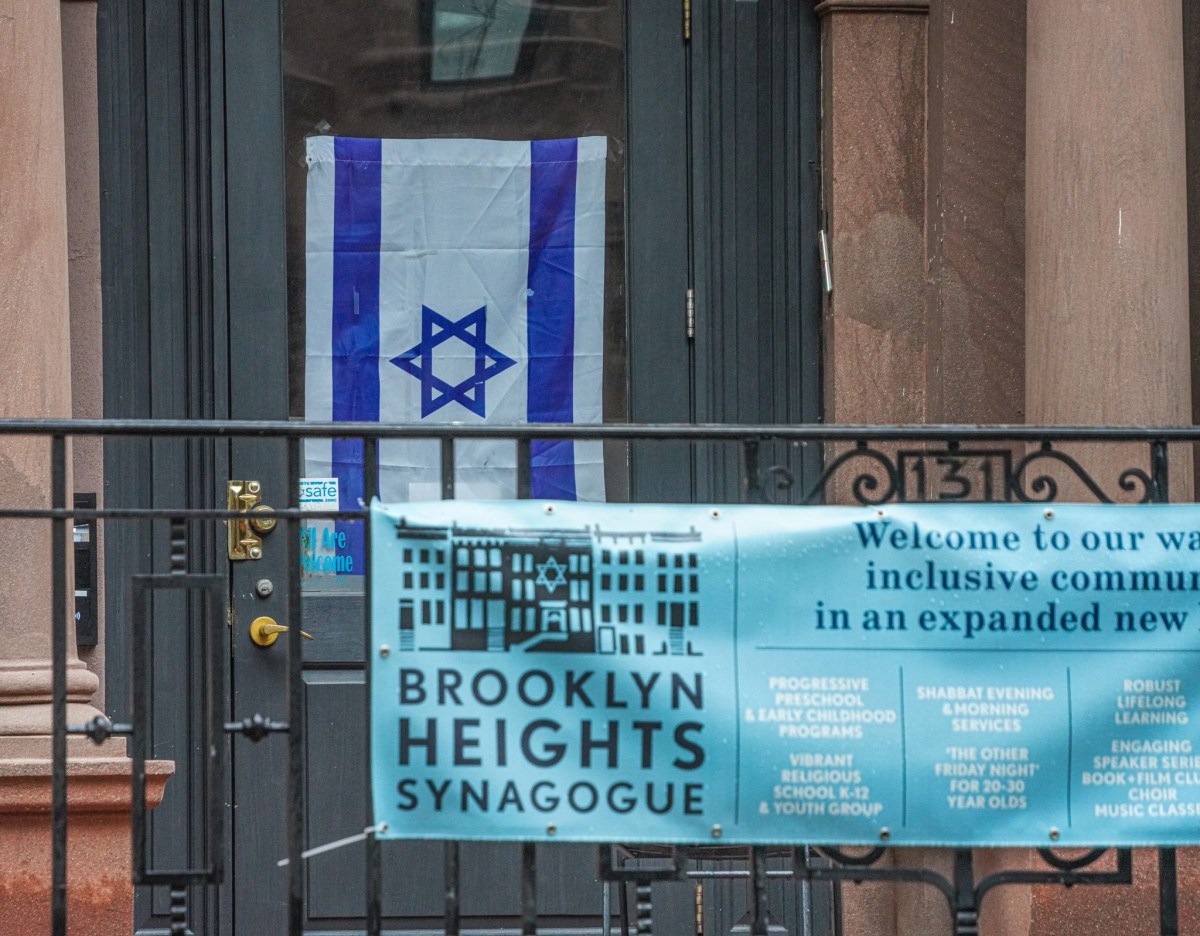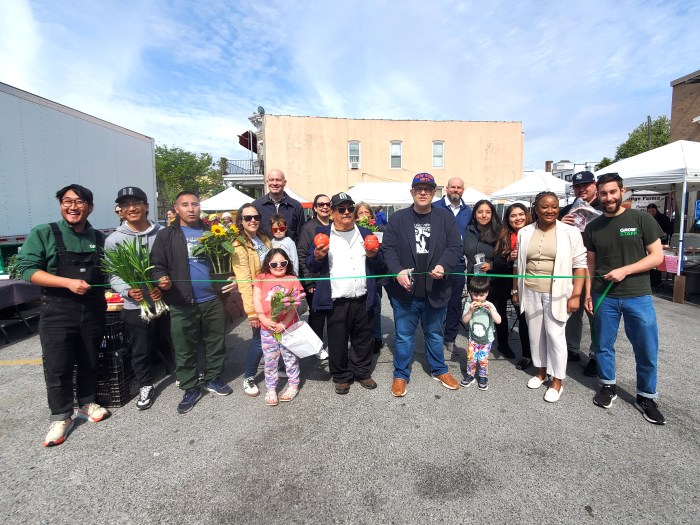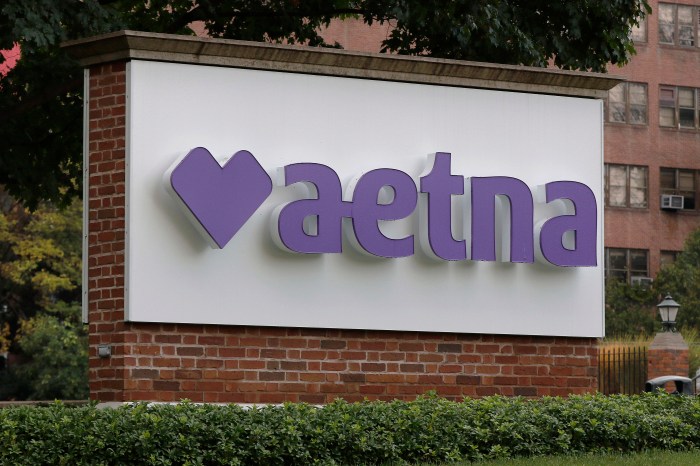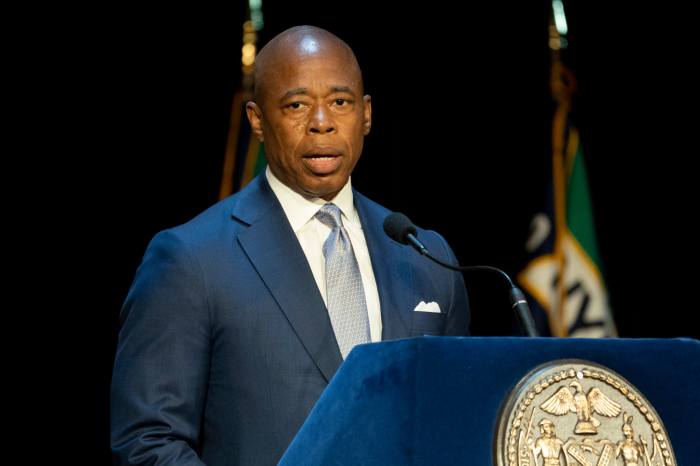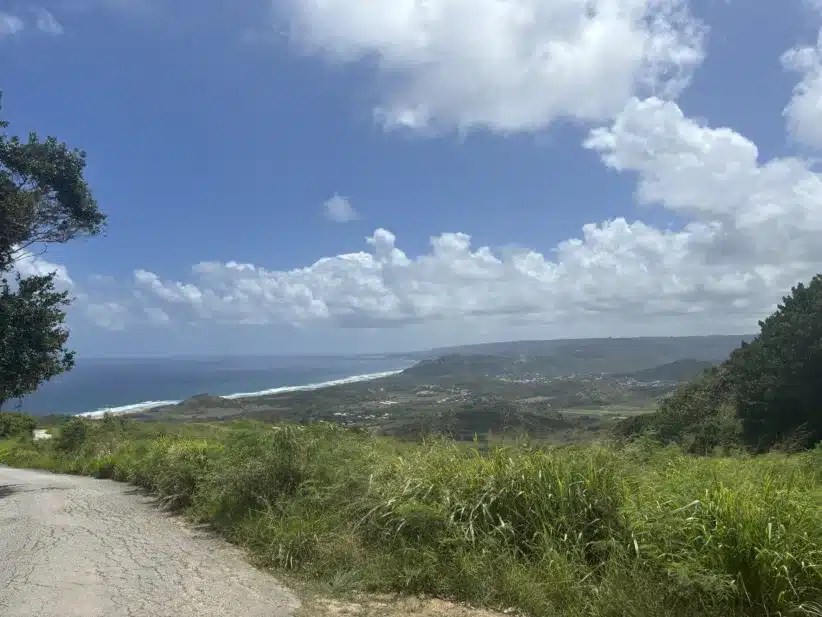Our dedicated team of Kings County connoisseurs predicts some of the big stories you’ll be reading about over the next 12 months.
1. The fate of Brooklyn’s Frontyard
Workers are busy erecting the two polarizing towers at Brooklyn Bridge Park’s Pier 6, even though the fate of the high-rises at the foot of Atlantic Avenue — which now rests in the hands of Justice Carmen Victoria St. George — has yet to be decided. The Manhattan Supreme Court judge finished hearing arguments from attorneys for civic group the Brooklyn Heights Association — the organization suing to stop construction of the 15- and 28-story towers — and park honchos and their chosen developers in November. And both parties now anxiously await St. George’s looming decision on whether the controversial high-rises — one with 100 units of affordable housing — can continue going up, or will have to be torn down.
Many locals and activists who oppose the development have their eyes glued to St. George’s chambers, because they claim that if she rules in favor of the project, it will set a legal precedent with nationwide implications that incentivizes private development of so-called public land.
2. Golden’s last ride?
Bay Ridge Republican state Sen. Marty Golden ended 2017 caught in the crosshairs of a car-fueled conflict after a cyclist alleged that the lawmaker impersonated a police officer, ran red lights, and ordered him to get out of a bike lane so that he could continue speeding down it in a car driven by his aide. And subsequent reports by the New York Post and the New York Daily News turned up that Golden accrued more than 30 traffic violations over the last four years; that he paid a $750,000 settlement to settle a lawsuit after he hit a 74-year-old woman — who remained in a coma and died six months later — in 2005; and that City Hall was investigating the incident.
And in 2018, he’ll face another challenge: defending his seat in Albany against Democratic competitors Ross Barkan, a journalist, and Andrew Gounardes, who unsuccessfully tried to unseat the legislator in 2012.
As Golden works to recover from his latest bout of road rage, watch for other candidates — especially challengers from his own party — to emerge when campaign season kicks into full gear.
3.Pump the gas on Expressway repairs
Local leaders continue to demand state lawmakers green-light legislation to speed up the long, messy, and pricey infrastructure scheme to repair a 1.5-mile stretch of Brooklyn–Queens Expressway from Atlantic Avenue to Sands Street. Officials began their drumbeat for “design-build” — a process that combines a project’s bidding processes for design and construction and would accelerate the job’s start date to 2021 instead of 2024 — last year, after state Sen. Marty Golden (R–Bay Ridge) introduced a bill that would grant the city the ability to use the process on the roadway’s reconstruction. That measure never passed, but Golden claimed he will reintroduce it as soon as possible, and Brooklyn Heights’ newly appointed state Sen. Brian Kavanagh told this newspaper that fast-tracking the project is a “top priority.”
Transit honchos upped the urgency in December, when they claimed that trucks may need to be banned from the expressway’s triple cantilever — which runs beneath Brooklyn Heights’ promenade — if the roadway is not fixed by 2026 (if design-build is allowed, it is projected to end that year; if it is not, the job won’t end until 2029).
4. Angel’s new ‘Guardian’
Locals and leaders in Dyker Heights have been up in arms since this newspaper revealed in December that the Sisters of Mercy sold its sprawling Angel Guardian Home campus, which takes up an entire city block, in a secret deal with an alleged $23 to $24-million price tag.
A pack of concerned residents called for the Sisters to sell the former orphanage — which currently houses area oldsters’ club house, the Narrows Senior Center — to a developer who would build affordable elder housing, while others called for more classrooms on the site, since the neighborhood’s school district is the city’s most overcrowded. But a broker who made a failed bid for the property said that the developer that inked the biggest real-estate deal to hit Dyker Heights in a generation would likely apply to rezone the plot in order to build as much as possible.
Who that developer is may remain a mystery, but once the sale officially closes, we do not expect his or her identity to stay a secrect for long.
5.Fourth Avenue’s changing lanes
Transit officials are asking community boards representing Park Slope and Sunset Park to weigh in on a proposed Fourth Avenue redesign that includes the always controversial addition of a protected bike lane. The plan would eliminate 225 parking spaces within the district of Sunset Park’s Community Board 7 alone, provoking mixed reactions from progressive Park Slopers who — surprise, surprise — largely support the bike-friendly proposal and some Sunset Parkers who are more apprehensive about how the changes.
If both boards vote in favor of the road’s redesign, the city will install the protected bike lanes from 65th to 38th streets this spring, and extend the pedalers’ paths from 38th Street to Atlantic Avenue in 2019. But if the community boards pan the proposal, it is possible the project will be delayed.
6. An L of a mess
State and local transit honchos in December released a long-awaited alternative-transporation plan for straphangers who cannot cross the East River on the L train when its underwater Brooklyn–Manhattan tube closes for repairs in April 2019, but the proposal is missing some key pieces that need to be hammered out long before the closure begins. Chief among them is how to handle what many expect to be a big surge in traffic on Grand Street in Williamsburg, an already heavily traveled commercial thoroughfare that even more buses will cruise during the shutdown.
And some pols are demanding that the city rethink a pending purchase of 200 diesel-fueled people-movers before they implement any plan that calls for more vehicles on the streets, claiming the increase in gas-guzzling buses will bring more pollution to the nabe.
7. Eye on the Watchtower
The framework atop the Jehovah’s Witnesses’ former Brooklyn Heights headquarters no longer boasts the religious organization’s red, 15-foot Watchtower letters, but one of the site’s new owners — who purchased the building as part of a collective that also includes President Trump’s son-in-law, Jared Kushner — told this newspaper that the scaffolding may soon hold a new sign as the building undergoes its makeover into a massive workspace.
“As the property undergoes its transformation into a world-class office campus, there is an opportunity to bring a new beacon to the Brooklyn skyline,” said Asher Abehsera.
What word or image might decorate the neighborhood’s skyline remains to be seen, but knowing who is involved in the building’s second act, it’s a safe bet that whatever it is, it will be yuuuge.
8. Keep off the grass
The last vehicles legally cruised Prospect Park’s East Drive on Dec. 29, when a provision allowing Downtown-bound motorists to use the thoroughfare on weekdays from 7 to 9 am officially ended to make way for Mayor DeBlasio’s permanent ban of cars within Brooklyn’s Backyard, which kicked in on Jan. 2. But a harrowing Dec. 7 early-morning hit-and-run accident on the park’s West Drive — which Hizzoner banned all traffic from in 2015 — served as an ominous warning that it takes more than progressive policies to protect pedestrians in the meadow.
With a full car ban in place, time will tell whether the mayor’s beefed-up edict is enough to keep park-goers safe once and for all.
9. Riding into the future
When news broke early last year that the owners of Prospect Park’s only horse barn, Kensington Stables, were bankrupt, locals were rightly concerned that the long-standing tradition of galloping through the green space would become a thing of the past. But after a long and bumpy ride, during which some mystery buyers and the city all considered offers to buy the barn that ultimately failed, this newspaper reported that a dark-horse entity — later revealed to be Red Hook concrete magnate John Quadrozzi, Jr. — purchased the stables at auction in a yet-to-be-finalized deal that would keep the facility and its operators in the horse business for at least five more years.
Weeks after Quadrozzi’s purchase, however, the city slapped the stables with an immediate vacate order after inspectors found its roof partially collapsed. But the new owner — who is required to fully renovate the property following a judge’s official approval of the sale — said he is already working with the stables’ operators to correct the violations so that he can keep the barn up-and-running for “as long as possible.”
10. Too big to fail
A proposal to rezone a triangular Boerum Hill block bounded by Flatbush Avenue, Third Avenue, and State Street in order for developers to build super-tall towers of unprecedented density on the plot goes before the City Planning Commission on Jan. 29 — and if it is approved, Community Board 2 will hold a public hearing on the proposed 74 and 38-story 80 Flatbush towers some time in February, kicking off the project’s Uniform Land Use Review Procedure.
The plan to bring the two high-rises — which would include 900 apartments with 200 units of so-called affordable housing, retail space, a new 350-seat elementary school, and a new home for the already-on-site Khalil Gibran International Academy — to the brownstone-lined nabe drew the ire of many residents, who argued the massive structures have no place in the historically low-rise enclave — and we expect those cries to only grow louder if the public-review process for the 80 Flatbush high-rises proceeds.
11. Armory’s new battle
A city-backed scheme to redevelop Crown Heights’ Bedford-Union Armory survived its long and torturous public-approval process, but just as Council voted to approve the hugely controversial plan — which permits a private developer to build luxury rentals along with so-called affordable housing and a community center on the site of the historic military structure — attorneys at the Legal Aid Society filed suit against the city in an effort to stop the project, claiming the land-use and environmental-review processes used to asses its impact on residents of the neighborhood are flawed.
Lawyers on both sides expect a state Supreme Court judge to rule before the city officially signs off on the armory’s 99-year lease to developers BFC Partners some time this summer, and the verdict will either green-light construction, or send the project back to the drawing board.
12. More protections for pedestrian spaces
Local pols intensified demands that the city install protective bollards to shield pedestrian areas that future terrorists could target following the October truck attack in Manhattan that killed eight and injured 11 more. Councilmen Mark Treyger (D–Coney Island) and Chaim Deutsch (D–Sheepshead Bay) sent letters to Mayor DeBlasio, Police Commissioner James O’Neill, and Parks Commissioner Mitchell Silver, renewing their calls for the trio’s offices to install retractable, fortified bollards at 32 entry points to Coney Island’s Riegelmann Boardwalk to restrict access to authorized vehicles, a proposal that the parks department later confirmed it was studying with the police. And Treyger upped the ante in November when he called on the city to install guard rails along a 1.15-mile unprotected stretch of the Belt Parkway that runs parallel to the Shore Road and Gravesend Bay promenades.
The local leaders’ requests may get a boost from a Manhattan Councilman, who last month introduced legislation that would require the parks and transportation departments to annually report on bollard-related statistics including how many are installed, where they are put, and what third parties are authorized to build them. That bill’s fate could be a litmus test for how far the calls for more bollards and other protective structures will go.
13. Closing a months-old case
Police officials still have not closed their investigation into the death of Neftaly Ramirez — who a garbage-truck driver employed by a private-carting service struck and killed in a hit-and-run last July — yet no one has been charged with a crime. And as long as police keep the case open, all evidence is sealed, and the public doesn’t know what happened.
We’ve been on wait-and-see mode since August as to whether authorities will close the case with or without and arrest — a decision they are sure to make as more time passes and outrage over the incident simmers down.
14. Cleansing Coney Island Creek
If locals thought the waterway couldn’t go any further up s— creek after it was reported that 16 Gravesend buildings were dumping 200,000 gallons of raw sewage into it each day — possibly for years — and researchers found unusually high levels of fecal bacteria in it well after those buildings allegedly stopped dumping feces in the water, they thought wrong. About halfway through 2017, the state Department of Environmental Conservation approved a permit for the city’s Economic Development Corporation to pour up to 7.2-million gallons of filtered, contaminated groundwater into the creek every day for up to two years while workers upgrade sewers and water mains in Coney’s west end. And more recently, the state agency blocked the Billion Oyster Project’s proposal to install one million oysters in the channel to improve its water quality, because its honchos were concerned that residents would poach and sell the poop-infested molluscs, which would contaminate any eaters with fecal bacteria.
But the Oyster Project’s leaders plan to submit a revised application — which will allegedly contain measures to discourage poaching — this spring, so the state may finally green-light a strategy to clean up the murky waters once and for all.
15. Cosmos kicked to the curb?
A long list of borough pols — including native son Sen. Chuck Schumer — called on the U.S. Soccer Federation to save the New York Cosmos and the hundreds of jobs the soccer club allegedly brings to its 7,000-seat home, Coney Island’s MCU Park, after the federation denied the team’s league second-division status for the 2018 season. A club spokesman said the Cosmos’ owner, Italian cable magnate Rocco Commisso, planned to close the North American Soccer League and the seven teams in it — including his own — if the squads were banished to the third division, since that status would bring fewer sponsors, decreased salaries for the players and coaches, and a lower level of competition.
The league appealed the U.S. Soccer Federation’s decision on Nov. 4 in the U.S. Court of Appeals, according to the spokesman, leaving the case — and the Cosmos’ fate — up in the air. But the ball will likely drop soon.
16. NYU Brooklyn gets bigger
New York University’s Tandon School of Engineering’s Downtown campus — long the neighbor and fascination of this newspaper, which is published in a nearby office — expanded last month from its MetroTech home to new digs across the street inside the brutalist Metropolitan Transportation Authority building, which sat nearly vacant for years before the university signed a 99-year lease and began a $500-million makeover of the site in 2012.
School honchos say the 13-floor building will be fully occupied by 2019, and when the gut job — which seems to have included perches for inquisitive pigeons outside every window — is complete, it will also boast classrooms for pupils enrolled in the college’s Tisch School of the Arts and its culture-and-technology program, Media and Games Network. We look forward to welcoming them — and to the longer lines at our local Starbucks.
17. More ‘monstrosities’
The gigantic AvalonBay tower on Voorhies Avenue in Sheepshead Bay opened this summer after the city slapped its builders with a stop-work order in April, which was quickly lifted after developers fixed the violations. The 30-story building at 1 Brooklyn Bay, near Shore Parkway and E. 16th Street, includes 236 units of rentals and luxurious condos, but has been dubbed a “monstrosity” by some locals. It’s one of a few high-rises planned for the neighborhood, and will surely be a swanky home for some Brooklynites, but an eyesore for others who continue fighting development in the area.
With one of the nabe’s first super-tall towers complete, and a handful of others rising, we’ll be watching to see how many more developers seize an opportunity to alter Southern Brooklyn’s skyline.
18. Puck stops here
There is no doubt the New York Islanders’ move to Brooklyn was an unqualified disaster, and now the hockey team will soon be on its way out to the greener pastures — and a new arena — at Belmont Park in Queens. This year could be the team’s last at the Barclays Center, which wasn’t built for hockey, anyway, so it could be your last chance to see the players compete without having to take the Long Island Railroad.
In other words, it could be the last chance to raise Lord Stanley’s cup in Brooklyn.
